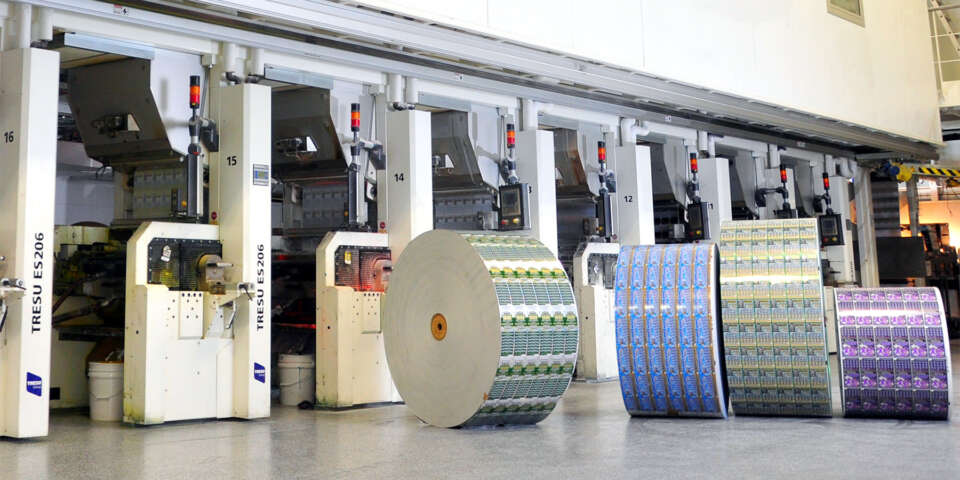The production process begins long before the rolls of paper ever hit the press, and it continues long after the forklift ferries the colorful tickets to the company’s complex packaging and prize balancing process. It’s a modern technology sight to behold. And it’s sometimes hard to fathom the sheer magnitude of this $118 billion global consumer product.
Behind the scenes, visitors to Scientific Games’ five instant game production facilities around the world are rare. They are escorted by security at all times, no photos or video recordings are permitted (unless it’s a highly-controlled customer tour or for educational use), and most tour participants leave with a sense of awe.
While tens of thousands of tickets are produced every minute, the security, pre and post-production processes and state-of-the-art printing technologies have been refined over nearly five decades. Within the precisely produced rolls of tickets, millions of dollars in prizes await lucky players.
Instant Game Production
Scientific Games’ global scale and the unparalleled agility of its operations keep instant games moving through the design, production and retail distribution pipeline, navigating supply chain and workforce challenges that may threaten lottery inventories and beneficiary funding.
Producing up to 53 billion secure, accurate instant game tickets globally—beginning with the basic raw materials of paper and ink—is a truly remarkable undertaking. The end products represent a complex blend of art and sciences—design, chemistry, mathematics, engineering, computer science, product marketing and management, robotics, and logistics. And it’s all meticulously aligned to customer contracts and the governing laws in each lottery’s jurisdiction.
While most of the Scientific Games production processes are proprietary, 14 primary steps take place before each uniquely coded ticket arrives at the retailer.
The company is leading the way for use of sustainably sourced and recyclable paper, water-based inks and environmentally conscious instant game production processes for energy use and waste-to-landfill.
Game Programming

Programming every game—the data that determines where all the prizes are—takes a global team of industry veterans and experts, including game developers, auditors, mathematicians, security experts, and managers. Most team members have 15+ years of experience, and operations run 24/7 in the U.S., UK, Canada, and Chile to ensure support at all times.
The global team routinely delivers 10-15 accurate, highly secure, quality games per day. The programming process has positioned Scientific Games as the leading instant game provider in the world. The process is ISO 27001 certified to meet an international set of standards that require documented policies and procedures for 133 separate security controls, and it is controlled by proprietary Scientific Games automation systems that ensure all required procedures are followed.
From the first ticket to the last, the company’s systems produce games that are confidential and display a unified integration of the prize structure and game parameters.[SH4]
Game Software Development – Programmers create game development software to the lottery’s game specifications. The software then creates all play symbols, numbers, letters, and barcodes unique to each individual ticket.
Next, independent audit programmers develop audit software that verifies every ticket number, every validation number, every play symbol, and every barcode—the individual ticket’s game data—fully respects the rules in the game’s ‘working papers’. This includes verification of the game’s play mechanics, symbol set and positioning, prize structure, rules, and parameters.
As a final step, a separate team of Scientific Games internal and external auditors test and give final approval of the game’s software by reviewing reports, inspecting ticket images, testing ticket data, and using any other evidence necessary to prove adherence to all game data requirements in the working papers.
Game Data Production – Custom applications and security systems control the production of the game’s live data. Automated applications transfer the final, approved version of the game software to the production system, and a separate suite of applications initiates and monitors the game’s data production from beginning to end. The systems work together so that the data is secure and 100% confidential.
No one knows where the winning tickets are until a game is purchased and scratched to reveal the prizes. Scientific Games uses complex, highly secure processes and technologies that ensure the integrity of the game. This is proven millions of times every day as players play instant games all around the world.
Security
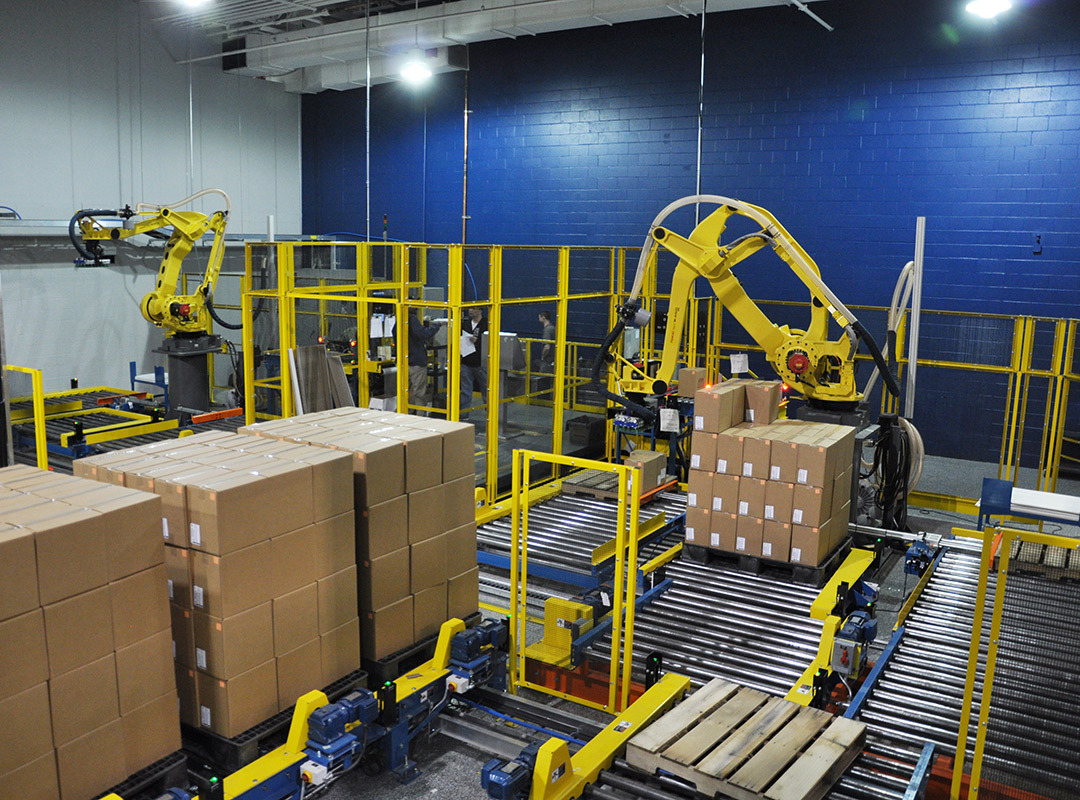
There is an extraordinary amount of quality and security practices involved in the company’s instant game production process—from audits to game design and programming, to secure bar codes and scratch-off coatings on the physical game ticket, as well as the secure distribution of lottery games. This takes place from the moment the games are designed, programmed and produced, to the moment they are distributed in the lottery’s retail network and placed on sale to the moment they are validated for a prize.
Multiple and overlapping layers of security systems protect the integrity of each and every game, including state-of-the art firewalls, networks and other security appliances and applications. At the core of these protected layers of security systems, game data is fully encrypted using highly advanced encryption systems. All of the company’s systems are subject to ongoing and independent scrutiny from expert auditors who assess security on behalf of lotteries.
Prizes are distributed in a game as randomly as possible. Patented Key Dual Security technology protects games by requiring separate ‘keys’ from multiple and independent parties for each game. Two keys, one created by Scientific Games, and one created by the lottery, are needed to produce valid game data. The keys control the game’s random number generator which controls the shuffling of winning and non‑winning tickets in the game.
The result is an unpredictable and unbiased mixture of winning and non-winning tickets. Add in the random distribution of packs from warehouses, and the millions of instant game wins around the world are random events occurring every minute of every day.
As the company that created the world’s first secure instant game, Scientific Games continually develops new systems and tools that improve the security, accuracy, and efficiency of the game development process.
Pre-production
The prepress function ensures that the final game to be delivered accurately matches the original art approved by the lottery and represented by the ticket proof. A simulated ticket—the contract proof— represents the final printed product in its most detailed, color‑accurate form using the industry’s most realistic proof generation technology.
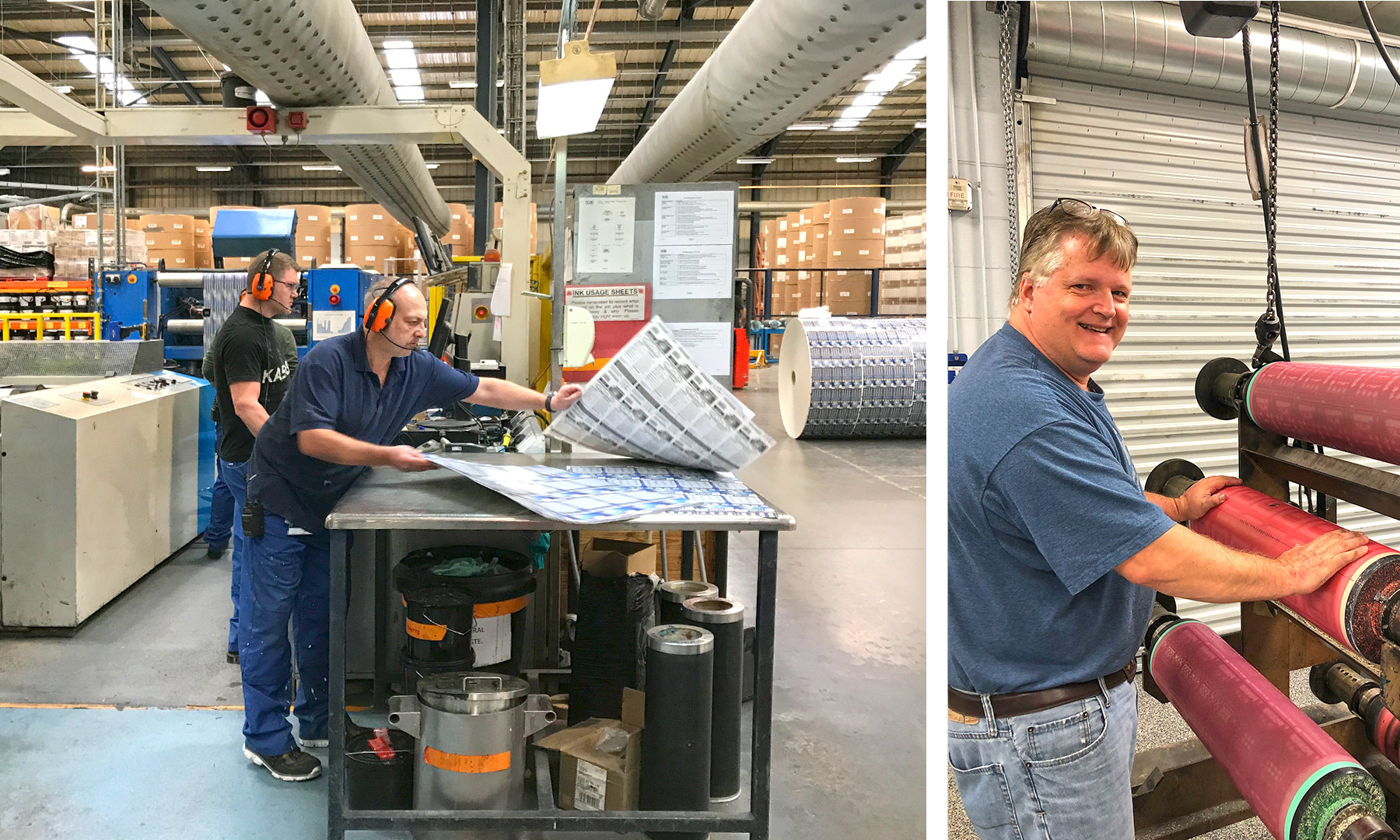
Because millions of tickets will be created from the plate files, Scientific Games’ proofing technicians review every set of blueline proofs before the game can be plated for the press. The technicians are considered an audit team for the entire prepress process—from artwork, through working paper development, to plate file completion. They check that the game specifications were produced, and confirm that every aspect of the tickets is correct.
Game Production
Each press, or ‘printing system’, is an engineering marvel of technologies, integrating sophisticated imaging systems, custom‑designed drying and curing units, inspection cameras, and data capture systems—all managed by expert print professionals. Offering exceptional reliability, flexibility, and capacity, each printing system has specialized capabilities that produce diverse game designs, ticket sizes, finishes, and play styles.
Once all of the internal and customer approvals are complete, actual live ticket production begins. Each system processes up to 1,000 feet of paper per minute and produces up to one million 2” x 4” tickets per hour.
As paper unwinds from the gigantic roll, it begins the process of moving through up to 21 separate print units on the press—which means it’s able to handle even the most complex of games. Each unit applies a different layer or ink color on the paper.
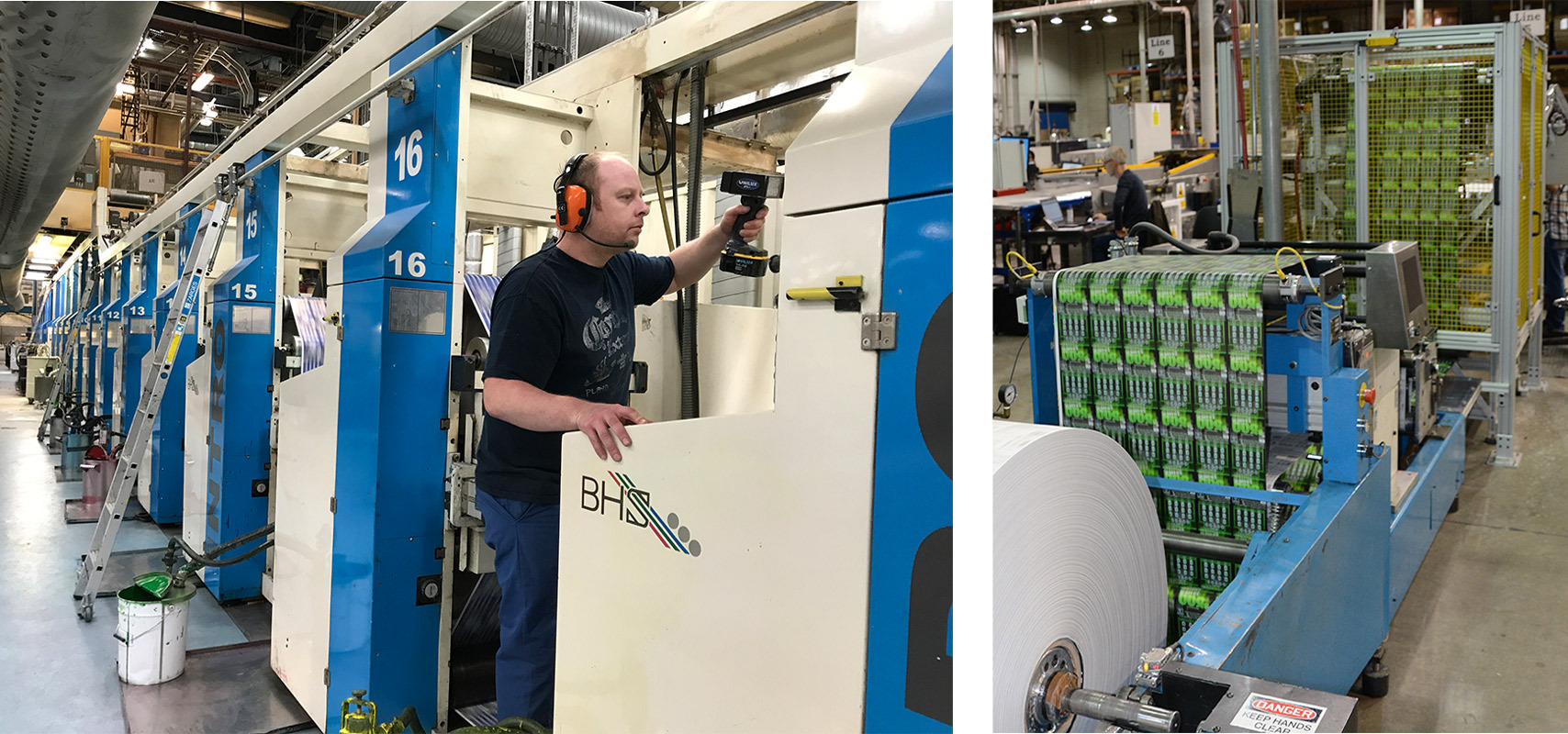
The back of the ticket is printed, and then multiple security layers are laid down, beginning with a lower opaque black security coating that provides good adherence to the paperboard and prevents light penetration. Next, a white or tinted security primer is applied over the black coating to create a secure, image-receptive play area. The ticket is now ready to receive the game data.
With nine presses operating worldwide, Scientific Games’ global teams work together, sharing knowledge and best practices that benefit instant game customers on six continents. At the forefront of developing the most advanced technology used in the industry today, the company continues to invest millions of dollars into instant game production, most recently increasing global production capacity by 20% with a technology expansion of the UK facility.
Shipping
At Scientific Games, the shipping department is an extension of the finishing process, responsible for the final preparation of each game so that it is received by the lottery’s distribution center in good condition and ready for distribution to its retail network. Each step in the process cannot occur until the previous one has been completed in this order:
- Prize balancing, final carton labeling and stacking
- Banding and wrapping
- Final audit
- Truck loading and shipping
Controlled by the company’s shipping system, a module of the overall packaging system, each step in the process is performed by trained personnel using specialized equipment and is closely monitored by managers and security.
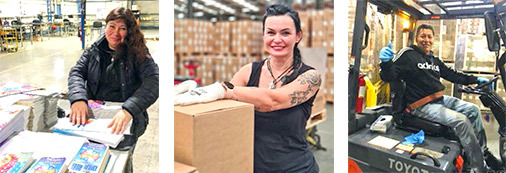
Finished pallets of tickets are tightly stretch‑wrapped from bottom to top to protect the contents and provide tamper evidence should someone try to open a carton during transit to the distribution center.
Pallets are then loaded onto trucks with no other deliverables on board and per the customer profile specifications. Required shipment documents are detailed within the customer profile. Also included with every game are inventory and validation files, sent via secure transfer. These files identify all good packs within the game and allow for distribution and system transactions.
Before closing and sealing the trailer doors, shipping personnel photograph the interior of the loaded trailer. The truck is then locked and sealed.
The lottery is notified when the delivery truck leaves the Scientific Games production facility. Shipment notification is sent to the distribution center and the lottery, providing data for the game, expected arrival date and seal numbers used for the truck.
Game Innovation & Portfolio Management
With a collaborative, total portfolio management approach, the company’s products are designed and produced to entertain players and drive maximum profits for lotteries of all sizes, including 19 of the Top 20 performing instant game lotteries worldwide (based on per capita retail sales).
Production capacity allows teams to conduct press trials of new products and materials that keep instant games relevant to consumers. The company’s innovation teams of designers, prize structure specialists, market analysts, programmers, chemists, and technologists continuously improve and invigorate instant games to provide the newest and most entertaining lottery experiences for players around the world.

